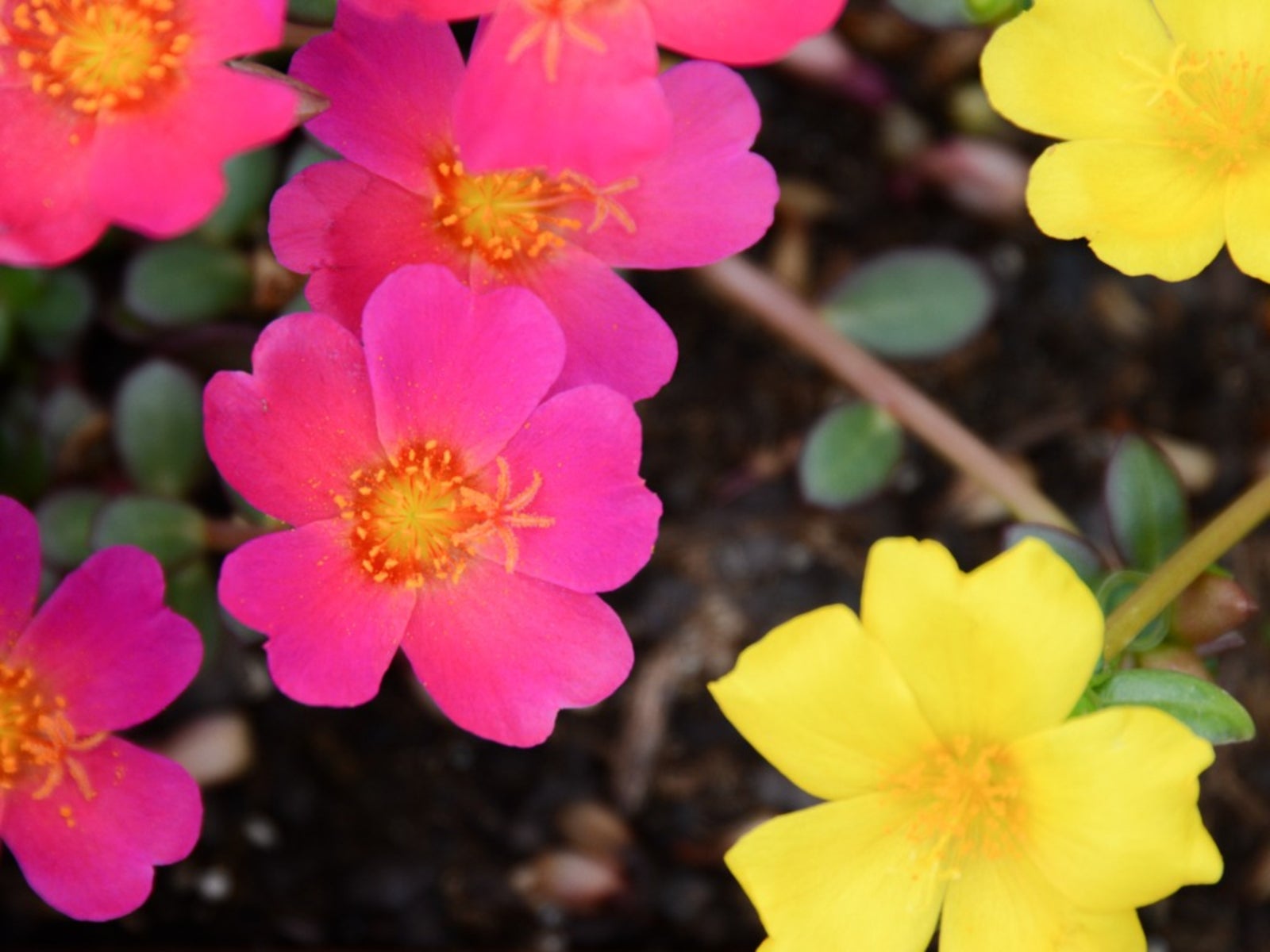Portulaca: Complete Plant Care And Growing Guide
Grow a beautiful portulaca for a lovely, multi-colored cascade of summer flowers. Easy to grow and not at all fussy.

How To Grow And Care For Drought-Tolerant Portulaca
Also known as moss rose, portulaca plants delight gardeners with their vibrant multi-colored blooms. Unique in form and growth habit, portulaca are most commonly grown as an annual. Learning more about this flower's hardiness and needs for growth can help you decide if this species is a good choice for your own growing space.
Quick Facts
Botanical name: Portulaca grandiflora
Height : 3-9 in. (7-23 cm.)
Spread: 6-12 in. (15-30 cm.)
Sun exposure: Full Sun
Soil requirements: Slightly Acidic
Hardiness zones: Annual – USDA Zones 2-11; Perennial – USDA Zones 10-11
Sign up for the Gardening Know How newsletter today and receive a free copy of our e-book "How to Grow Delicious Tomatoes".
When to plant: Spring
Portulaca Plant Care
Light
Portulaca flowers require full sun to grow their best. In fact, the appearance of blossoms on the plants depends greatly on the light conditions within your garden. On sunny days, you can expect the plants' flowers to open fully, and begin to close around sunset. Cloud cover or growing them in beds with excess shade may cause the blooms to remain closed.
Water
Portulacas do great in naturalized beds, rock gardens, and xeriscaped spaces. They have an impressive ability to withstand prolonged periods of drought. Still, moss rose plants benefit from routine watering throughout the growing season, with most gardeners finding weekly irrigation to be more than sufficient. Paying careful attention to soil moisture is necessary to avoid overwatering.
Temperature & Humidity
Moss rose plants can easily withstand prolonged periods of heat. This makes them an ideal addition to beds and borders in regions where many species may otherwise struggle to survive. Gardeners appreciate the plant's adaptability in terms of humidity, tolerating both low and high levels of moisture.
Soil
Portulaca plants are a good choice for a wide range of soil types. Though plants grown in well-amended soils produce lush foliage and a large number of blooms, those grown under less-than-ideal conditions can also flourish. Expect moss rose plants to perform well in soils that are sandy, rocky, or even show poor fertility.
Fertilizer
Though portulacas are most commonly grown as annuals, they are considered to be heavy feeders. Routine feeding throughout the growing season helps to keep the flowers blooming and better maintains their overall appearance. Use a water-soluble balanced fertilizer through the summer, applied according to the manufacturers' labeled instructions for safe use.
Problems, Pests & Diseases
Portulaca plants seldom have problems with pests or diseases, however, its good to remain vigilant. Common pests may include slugs and snails that feed on succulent foliage, as well as aphids.
Disease can become a problem under unfavorable growing conditions, specifically, soils that are excessively wet. Most of these problems, like root or crown rot, can be avoided by monitoring moisture levels carefully.
How to Grow Portulaca From Seed
Growing moss rose from seed is relatively simple. Though starting the seed indoors is most common, you can also successfully sow directly into prepared beds after all chances of frost have passed in the spring. As the seeds are quite small, you may want to mix them with a small quantity of sand to allow for more even distribution. With consistent warmth and moisture, portulaca seeds should begin to germinate after as little as one week from planting. Plant them in pots or place them around the garden.
Pruning
In terms of pruning, portulaca plants require very little care. Moss roses do not require deadheading, as they are known to self-clean, and drop faded blooms freely. The plants will, however, benefit from shearing mid-way through the summer season. At this time, each plant can be pruned back aggressively to refresh foliage and encourage the production of flowers into fall.
Propagation
Though portulaca plants are most commonly propagated by seed, some species can be multiplied by cuttings. Remove some small stem segments. Once stripped of excess foliage, place the cuttings into a moist rooting medium. Under ideal conditions, you should expect portulaca cuttings to succeed quickly, showing signs of growth in as little as two weeks.
Repotting
Portulaca plants that have outgrown their containers can be repotted into larger ones. Before beginning the process, water each plant well to reduce stress at the transplant. Each new container should be approximately twice the depth and twice the width of the plant's root ball, and filled with a high-quality potting mix. Adequate drainage is also paramount. Make certain that containers have at least two or three holes in the bottom of each.
Overwintering
Portulacas grown in frost-free regions can overwinter outdoors with very little care. Those that are grown outside of their hardiness range will succumb to the arrival of cooler temperatures, provided you do not intervene.
If you want to overwinter this plant indoors, move your containers before the first frost of the season. Potted specimens can then be placed near a sunny window and kept warm throughout the duration of winter.
Portulaca Varieties
Here are some of our favorite portulaca varieties:
Happy Hour
Happy Trails
Stopwatch Series
Sundial Series
Sunseeker
Frequently Asked Questions
Will Portulaca Come Back Every Year?
Whether portulaca plants will return depends on the species and your growing zone. Moss rose plants are frequently grown outside their hardiness range as an annual, and annual plants will not return the following growing season. However, many species grown in frost-free climates will continue to thrive.
How Do You Keep Portulaca Blooming All Summer?
Provided the ideal conditions for their growth have been met, portulacas should continue to bloom throughout the summer. Routine feeding throughout the season will the plant produce flowers. Plants that have become tall or leggy may benefit from shearing to help revitalize the plant and promote the production of new buds.

Stan V. Griep contributed to Gardening Know How for many years, and has been a Colorado Native Rosarian for over four decades. He is an American Rose Society Certified Consulting Master Rosarian in the Rocky Mountain District, and a member of the Denver Rose Society, the Loveland Rose Society, and the American Rose Society. He is Gardening Know How's in-house expert on all things roses.


